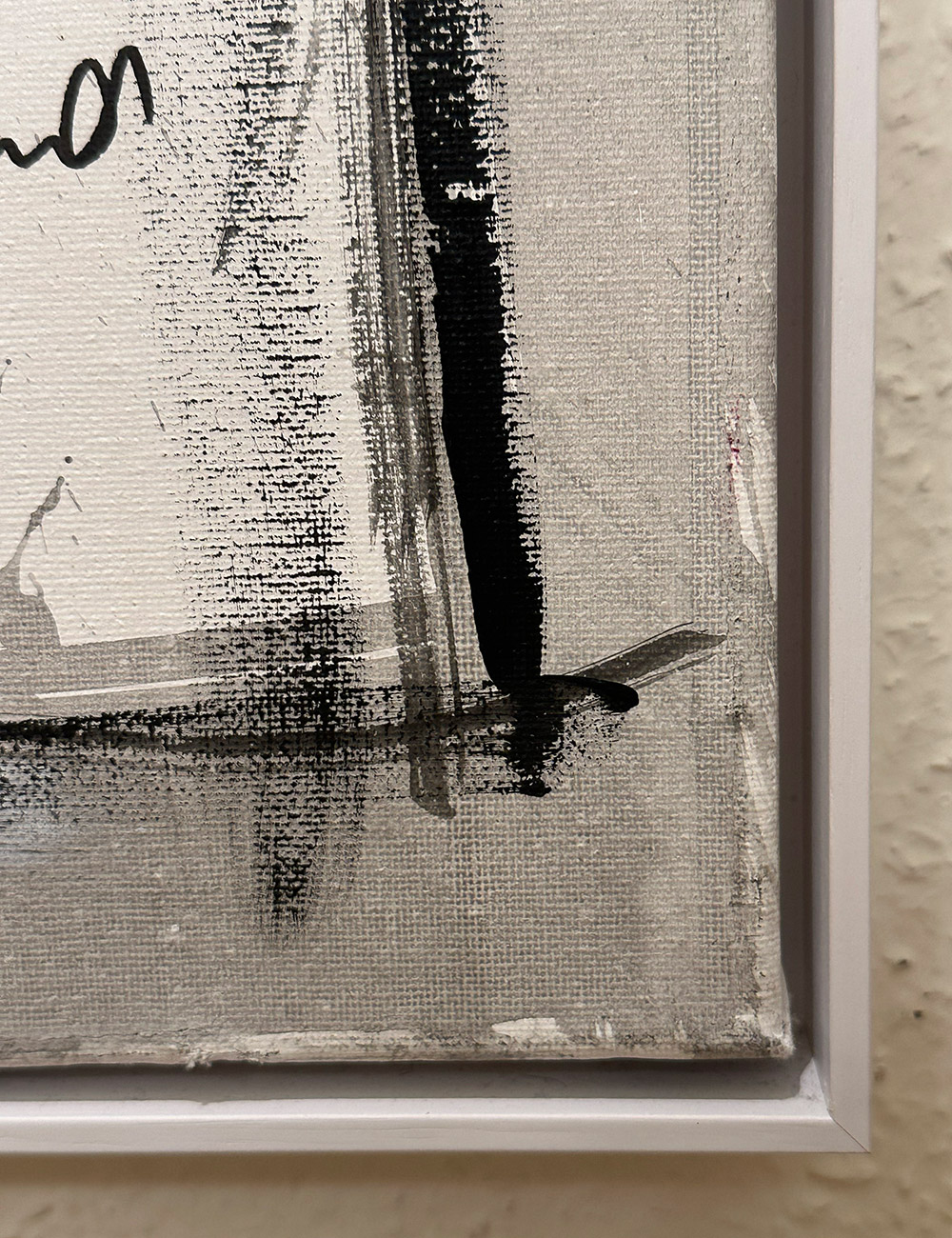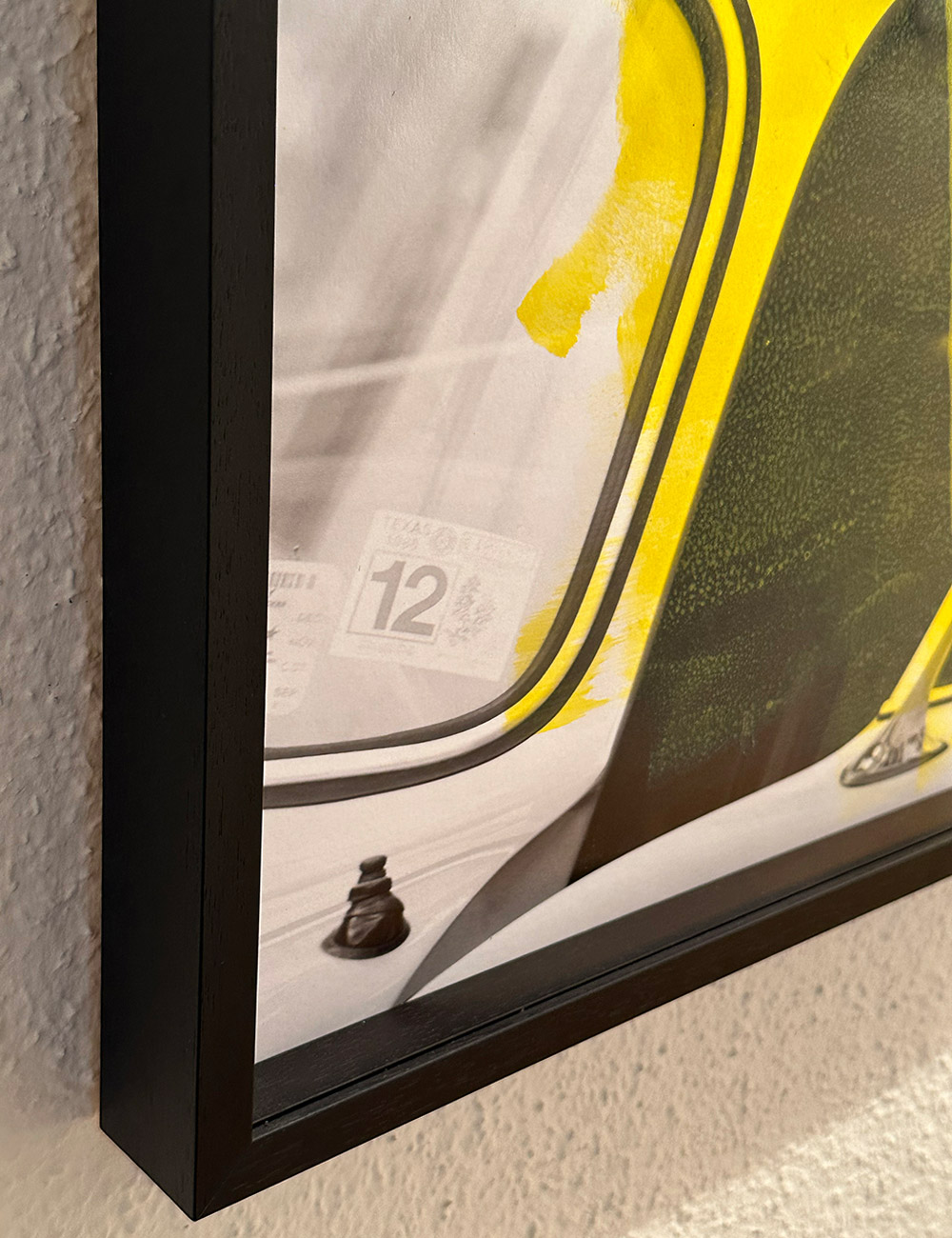
A work of art has been bought – and now what? Without the right frame, it remains a fragment. Here I show you what really matters.
You have purchased a unique piece or a limited edition print – congratulations! Now the question arises: how can you frame your artwork so that it is shown to its best advantage and remains optimally protected? In this article, I share tips and recommendations on how to frame your picture and present it perfectly.
Why is the right frame so important?
A frame is much more than just a holder for your print or unique piece. If you want to frame your artwork, you should not only pay attention to the look, but also to protection, value enhancement and the right presentation:
– Protection: A frame protects your work from dust, moisture and mechanical damage.
– Presentation: The frame emphasizes the aesthetics of the artwork and draws the eye to it.
– Value enhancement: High-quality framing adds value to a work and ensures a professional presentation.
Especially with limited editions or unique pieces like the Modern Madonnas or Split Screen the framing should be well thought out, as it influences the effect and protection of the work in the long term.
Choosing the right frame
If you want to frame your artwork, choosing the right frame depends on several factors: the style of the artwork, the environment in which it will be displayed and, of course, your personal taste. Here are some tips:
1. material of the frame
– Wooden frames: Wooden frames have a warm and classic look. They are particularly suitable for photographs and works with a natural color palette. In fact, I prefer to use custom-made wooden frames for my work, as they are timeless and at the same time allow for highly individual customization of each artwork.
– Aluminum frames: Aluminum frames, on the other hand, have a modern and minimalist look. They are particularly suitable for contemporary art and photographs where the focus is on clean lines and a simple presentation. Their stability and durability make them a popular choice, especially for large formats, as they elegantly emphasize the artwork without being too obtrusive – as is the case with SIGNED.FRAMED.ICONIC.where a simple black aluminum frame is part of the series aesthetic and perfectly accentuates the motif.
– Frameless picture holders: Although frameless picture holders offer an easy way to present works of art, they often appear less high-quality and stylish compared to classic frames. They do not protect the artwork as well from external influences and often make the picture look less valuable. A frameless presentation is particularly unsuitable for exclusive and limited edition works, as it does not adequately emphasize either the special character or the artistic quality of the work. A well-chosen frame is therefore essential in order to present the artwork to its full effect. Framing a work of art with a picture holder is the worst option (it is better to archive it protected from light in a suitable folder).
2. glass or acrylic?
– Normal glass: Inexpensive, but highly reflective and offers no UV protection.
– Museum glass: Reduces reflections, offers high UV protection and makes colors look vibrant. However, museum glass can be difficult to transport as it is very fragile.
– Acrylic glass: The optimum solution is anti-reflective acrylic glass with 99% UV protection. It is shatterproof, approximately half the weight of glass and at the same time offers excellent protection and a high-quality look.
If you have your artwork framed, I recommend a spacer strip. This means that the work is not directly behind the glass, but at a small distance, which creates more depth and a more elegant look.
3. passe-partout or not?
A passe-partout creates a gap between the artwork and the glass. It ensures an elegant presentation and prevents the work from coming into direct contact with the framing. A passe-partout is a particularly good choice for photographs and smaller formats. With SIGNED.FRAMED.ICONIC. for example, the passe-partout is part of the concept – it creates space for the motif and directs the eye exactly where it belongs.
4. shadow gap frame for canvas works
For works on canvas, such as some Modern Madonnas, a shadow gap frame is ideal. This frame gives the work the impression of floating freely in the frame and emphasizes its magnificent effect.
Tips for hanging your artwork
The framing is complete – now it’s time to set the artwork perfectly in scene.
Here are some practical tips:
– Hang at eye level: The center of the artwork should be at a height of about 145-150 cm from the floor.
– Consider the lighting: Indirect light or special picture lights let your work shine without damaging it.
– Avoid direct sunlight: UV rays can cause the colors to fade. Even with UV-protected glass, it is better to avoid direct sunlight.
– Combine cleverly: If you hang up several works, make sure they are harmoniously spaced and arranged in a balanced way.
Why I offer custom-made frames
To ensure that your artwork is presented in the best possible way, I offer custom-made frames that are specially tailored to my works. These frames are made to the highest quality and are perfectly matched to the respective formats. Whether an elegant shadow gap frame for a Modern Madonna or a minimalist frame for a print from the Collectors Edition – I will be happy to help you find the ideal solution. Click here for an interesting article about the different types of picture hanging.
Conclusion
A high-quality frame is essential if you want to frame your artwork and show it off to its best advantage. With the right choice, you can ensure both the aesthetics and longevity of your picture. By choosing a high-quality frame, suitable glass and well thought-out hanging, you can ensure that your work will impress for years to come. Whether with a custom-made frame or an individual framing solution – I will be happy to advise you.
🔗 Subscribe to our free newsletter now & never miss a thing!




